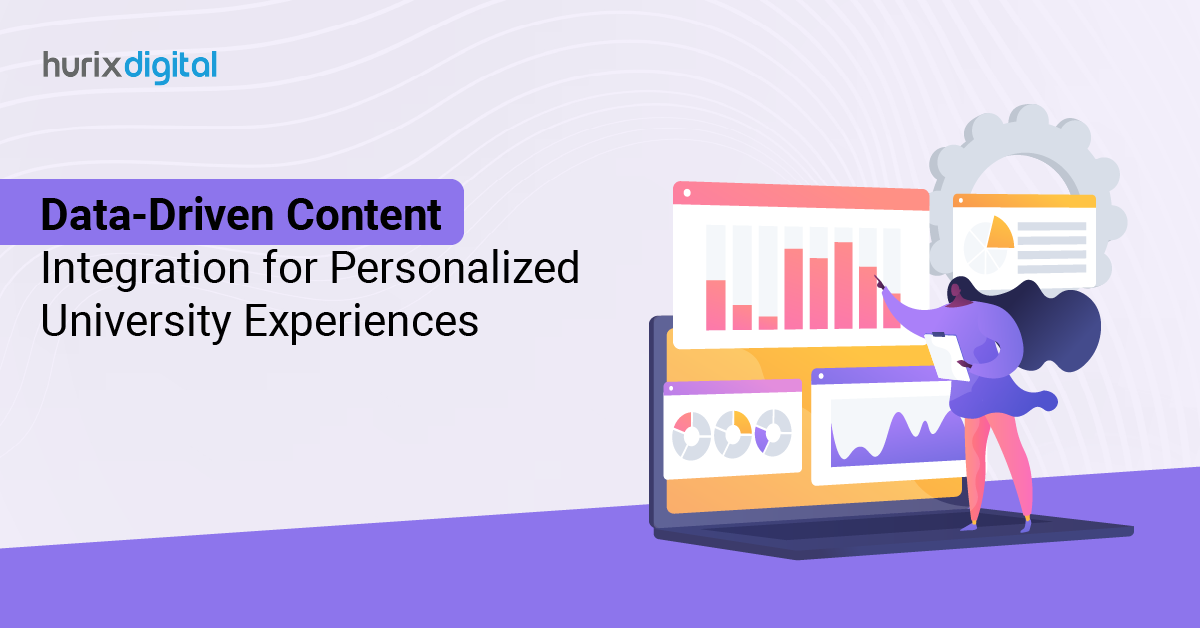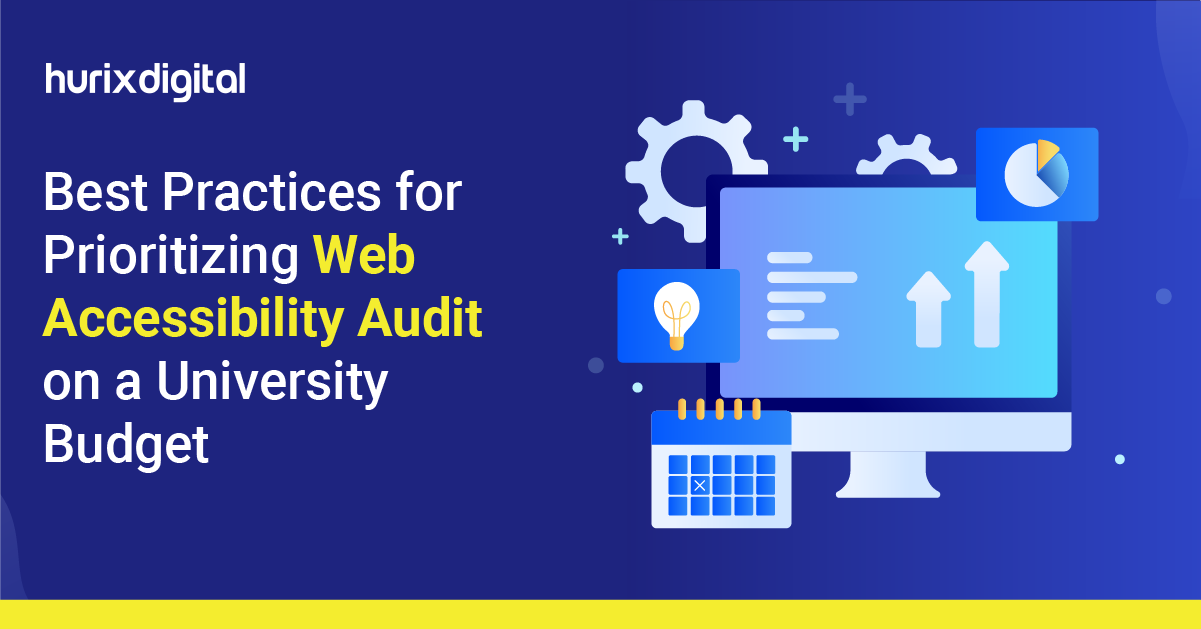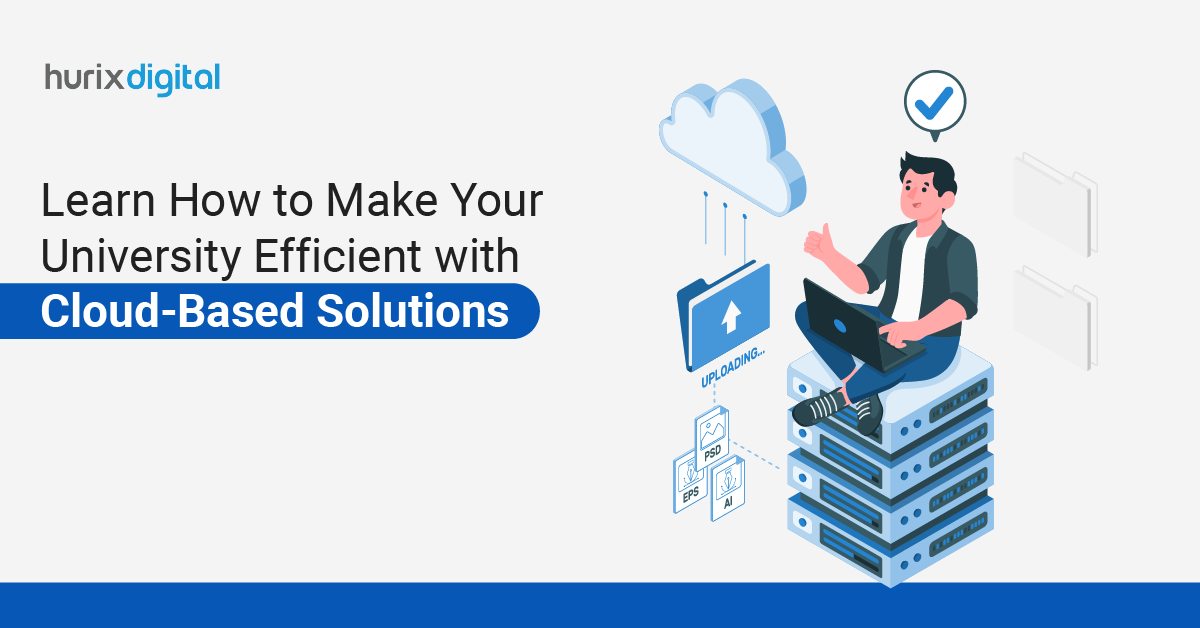
Data-Driven Content Integration for Personalized University Experiences
Summary
This blog discusses how educational institutions can integrate their content across learning, student, and CRM systems to create personalized and streamlined experiences that boost student engagement, success, and retention.
Imagine if every student could receive personalized guidance, timely reminders, and resources tailored to their unique learning journey. Content integration is making this a reality, enabling universities to craft tailored experiences that engage, support, and retain students.
For university leaders, adopting a data-driven, integrated approach not only enriches student journeys but also ensures efficient and impactful administration.
From connecting Learning Management Systems (LMS) to Student Information Systems (SIS) and CRM systems, content integration creates a seamless academic experience, setting universities apart in today’s competitive education landscape.
Table of Contents:
- The Value of Content Integration for Universities
- Key Components of Impactful Content Integration
- How Content Integration Enhances Student Engagement and Success?
- Strategies for Successful Content Integration
- Wrapping Up
The Value of Content Integration for Universities
Today’s university systems house vast amounts of student data across academic, social, and administrative channels. To provide exceptional learning experiences, universities must bridge isolated systems, uniting data to support students throughout their journey.
Effective content integration ensures all student-related data works cohesively, allowing institutions to:
- Provide personalized learning content.
- Improve administrative workflows across departments, reducing manual tasks and increasing efficiency.
- Facilitate proactive student engagement through data-backed insights.
- Inform academic program adjustments, ensuring alignment with student needs.
McKinsey reveals that centralized data integration improves operational efficiency and student retention, with some institutions reporting a 5% increase in enrollment within 16 months of implementation.
Also Read: How do Proofreading Standards Enhance the Quality of Educational Content?
Key Components of Impactful Content Integration
To achieve successful content integration, universities should consider the following elements:
1. Student Information Systems (SIS)
An SIS stores student data, from personal details to enrollment records and grades. Integrating it with other systems can centralize student information, which allows for:
- A 360-degree view of student progress and needs
- Early intervention for at-risk students
2. Learning Management Systems (LMS)
The LMS serves as the hub for course materials, assessments, and interactive learning. Integrating it with SIS enables instructors to:
- Tailor content to individual learning speeds
- Track engagement and intervene when students struggle
3. CRM Systems
A CRM in education helps manage and analyze student interactions. When linked with SIS and LMS, it supports:
- Timely communication for enrollment and program updates
- Data-driven insights that support personalized outreach efforts
How Content Integration Enhances Student Engagement and Success?
Creating connected experiences for students involves uniting fragmented data across multiple platforms.
Here’s how data-driven content integration helps universities:
1. Unified Student View
Integrating SIS with CRM systems and LMS gives a full view of each student’s journey. This enables tailored support. For example, if a student is underperforming in a course, data from the LMS can trigger personalized recommendations. This includes extra resources or support services, through the CRM.
By integrating SIS, CRM, and LMS, institutions can:
- Provide real-time feedback based on performance data.
- Send tailored alerts for deadlines, course updates, and campus events.
Personalized content leads to higher engagement. When students receive relevant information, they feel more connected and motivated to succeed.
2. Centralized Access to Resources
In a traditional setup, students navigate different platforms to access their records and assignments. Integrating LMS with SIS provides a unified, single-point access for students, removing barriers to their resources.
For instance:
- Course materials, grades, and faculty communications become easily accessible in one system.
- Students can track progress and receive suggestions for additional support.
3. Data-Informed Decision-Making
Universities are increasingly data-driven, yet without content integration, vital insights remain siloed across multiple systems. Integrated data allows leadership to make informed decisions around program improvements and student support.
For instance:
- Universities can analyze performance across academic programs to refine curriculum and support structures.
- Admissions teams can monitor trends to tailor recruitment efforts and student onboarding.
- By analyzing patterns in LMS logins and assignment submissions, an institution can detect early signs of disengagement, allowing advisors to step in and offer resources.
4. Enhanced Student Communication
Integrated CRM systems improve communication between students and institutions. Students receive notifications and alerts based on real-time data, which helps them stay informed and engaged.
With a CRM integrated into SIS and LMS:
- Students can receive targeted communications about assignments or academic advising.
- The institution can gather feedback on student satisfaction to improve engagement efforts continually.
5. Streamlined Administrative Processes
Administrative efficiency is one of the often overlooked benefits of content integration. Redundant data entry and manual processing can be minimized, allowing faculty and staff to focus on value-added tasks. This efficiency translates into cost savings for the university.
Benefits include:
- Automated data syncing between systems, reducing errors
- Real-time access to accurate information for administrative teams
Strategies for Successful Content Integration
To build a unified data environment, universities need a well-defined approach. Here are practical steps to implement effective content integration:
1. Evaluate and Map Existing Systems
Start by identifying all systems that handle student data, such as SIS, LMS, and CRM. Mapping these systems helps highlight how information flows and where integration is most needed. Be sure to align this process with institutional goals.
Set clear objectives. Clarity is key, whether your aim is improved communication, personalized learning, or streamlined operations.
2. Invest in Middleware Tools
Middleware acts as a bridge between systems, enabling seamless data sharing and reducing compatibility issues. Data silos are one of the biggest roadblocks.
Choose integration platforms that support interoperability between various systems to eliminate these silos. This is particularly critical for complex ecosystems like higher education, where data needs to flow smoothly between systems.
3. Focus on Data Privacy and Compliance
Student data is highly sensitive, so compliance is crucial. Adhere to privacy laws such as the Federal Educational Rights and Privacy Act (FERPA), and use secure APIs to protect data transfers. Reliable vendors prioritize security, using encrypted protocols to ensure data integrity and compliance.
4. Foster a Collaborative, Trained Team
Training is key to successful integration. Ensure that staff and faculty understand how to use the integrated systems and leverage data for personalized student support. A collaborative team can identify gaps, offer feedback, and ensure continuous improvement in content delivery.
Also Read: Budgeting for AI – Cost Considerations for Educational Technology Leaders
Wrapping Up
In a world where personalized education is fast becoming a norm, universities can no longer rely on disparate systems. Content integration offers a powerful solution to unify data, optimize operations, and personalize the student experience.
By connecting LMS, SIS, and CRM systems, universities are poised to create meaningful, connected journeys that empower students to succeed.
Hurix Digital specializes in delivering tailored integration solutions for higher education. With our expertise, we help universities achieve a unified, data-driven ecosystem that supports student engagement and operational excellence.
Curious about how your institution can benefit from advanced integration solutions? Connect with Hurix Digital to discuss how we can elevate your university’s data management practices. Let’s talk about how we can create meaningful change for you and your students.

Currently serving as the Vice President of Technology Delivery Operations at HurixDigital, a prominent global provider of digital content and technology solutions for publishers, corporations, and educational institutions. With over 16 years of experience spanning EdTech and various domains, I hold certification as a SCRUM Product Owner (CSPO). My expertise includes operations, finance, and adept people management skills.








